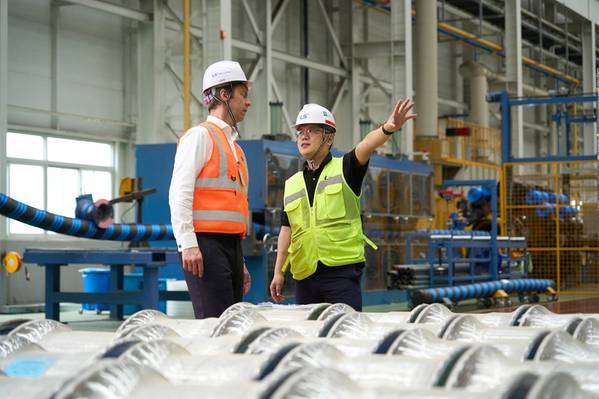
The production of new cables with a voltage of 525 kV, intended for the BalWin4 and LanWin1 offshore wind grid connection projects, has started at LS Cable’s facilities in South Korea.
The start of production at LS Cable in South Korea’s Donghae marks the beginning of a new technological chapter for TenneT's offshore grid connection systems.
The new cables with a voltage of 525 kV raise the transmission capacity for offshore wind energy to a new voltage level.
They make it possible to transmit 2 GW of direct current over long distances with low losses. Up to now, 320 kV cables have been used for offshore grid connections, for example in TenneT's 900 MW projects.
The start of cable production is part of the framework agreement that TenneT concluded with the consortium consisting of the Jan De Nul Group, LS Cable & Systems and Denys in May 2023.
The contract covers the production and installation of four 525 kV DC cable systems for the TenneT grid connection projects in the North Sea. The first DC cables produced by the South Korean cable manufacturer LS Cable are intended for the BalWin4 and LanWin1 grid connection projects.
In addition to a positive and negative pole, an additional cable - a so-called metallic return conductor - will be laid for both grid connections in future, which will ensure that electricity can continue to flow in the event of maintenance or repair work. The three cables will be supplemented by an additional communication cable.
A total of 1,650 kilometers of cable will be produced for the BalWin4 and LanWin1 projects. Route length per project is 275 kilometers, of which 165 kilometers are subsea cables and 110 kilometers are land cables.
The inner conductor is made of copper, which makes the cables real heavy-weights. The subsea cables alone weigh around 76 kilograms per meter. The total weight for the submarine cable (plus/minus pole) is therefore around 25,000 tonnes per project - a logistical challenge.
Production of the cables will be completed in 2028. Cable laying at sea is expected to begin in the second half of 2026.
Jan De Nul Group will use the extra-large cable-laying vessel ‘Fleeming Jenkin’, which was specially designed and ordered for the transport and laying of the 525 kV DC cables on the seabed.